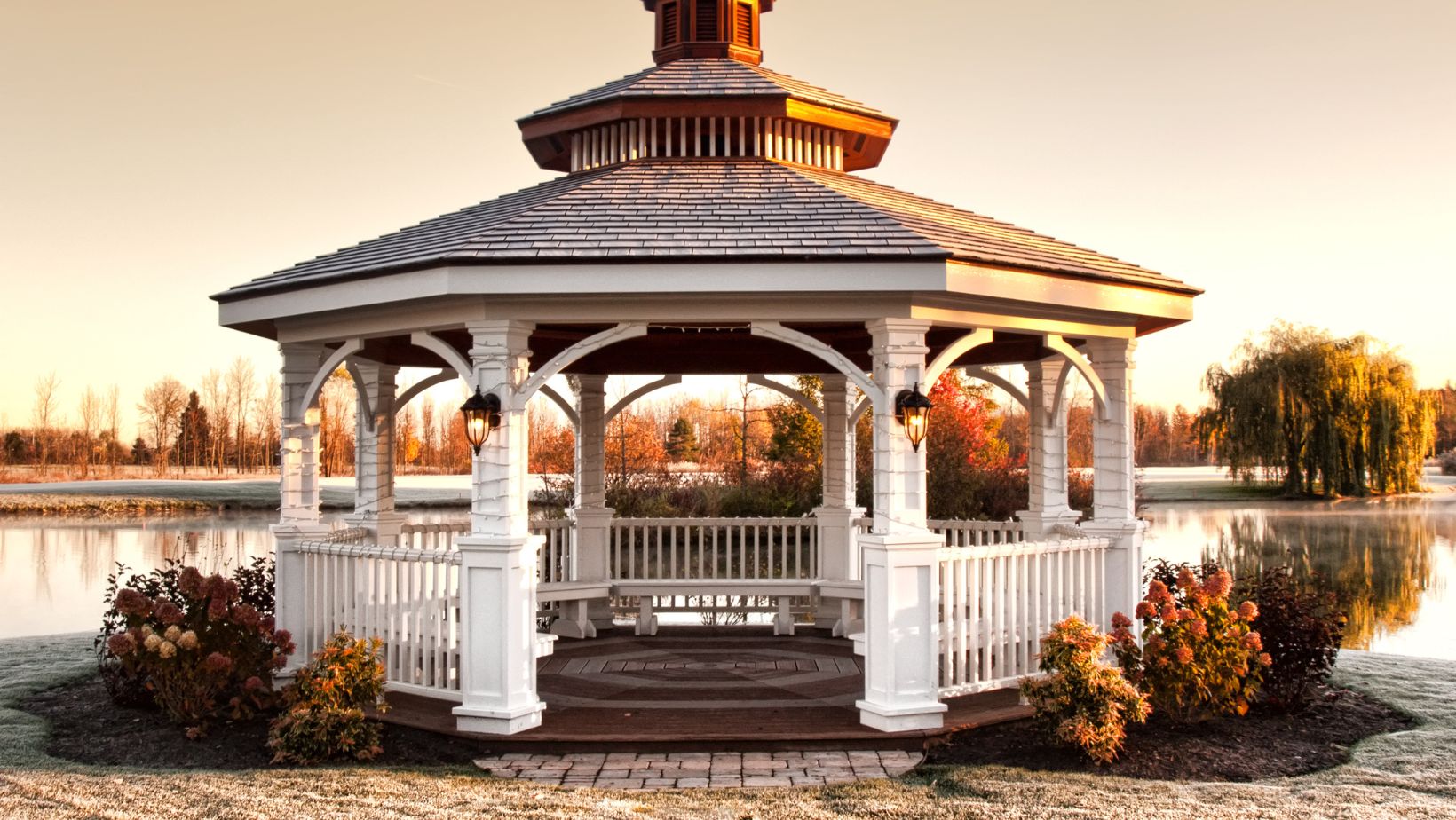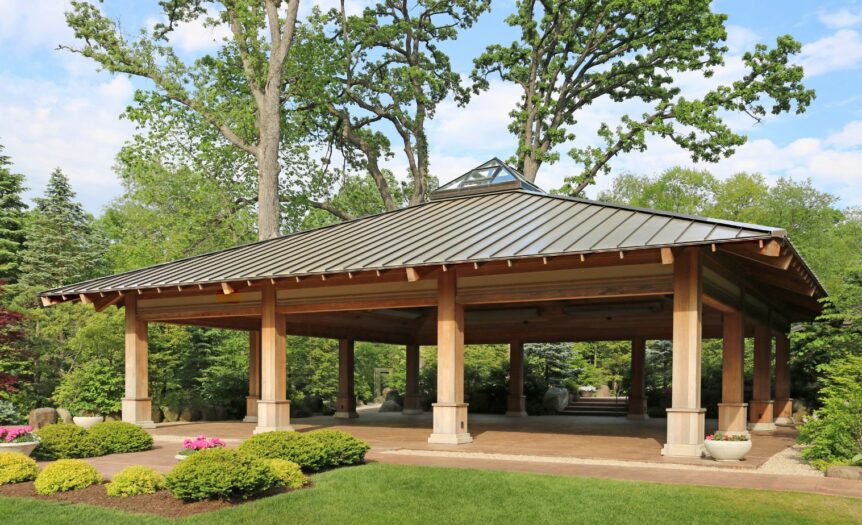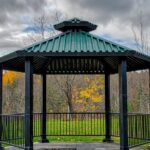Pavilion vs Gazebo
A pavilion is a freestanding structure with an open design supported by pillars or columns. It typically features a solid roof without any walls, providing shade and shelter while allowing for an unrestricted view of the surrounding area. Pavilions are often larger in size and can accommodate various activities such as outdoor dining, entertaining guests, or hosting events. They offer versatility in terms of design options and can be customized to match your aesthetic preferences.
On the other hand, a gazebo is a small enclosed structure usually characterized by its octagonal shape and open sides. Unlike pavilions, gazebos have walls made of lattice or screens that provide protection from insects while still allowing airflow. Gazebos are perfect for creating intimate spaces within your outdoor area where you can relax or enjoy some privacy. They often serve as focal points in gardens and can be adorned with climbing vines or hanging plants to add charm and beauty.
Comparing Pavilions And Gazebos
Design Differences
Pavilions are typically larger structures with a solid roof and open sides. They often feature columns or pillars to support the roof, giving them a more formal and grand appearance. Pavilions can be standalone structures or attached to a building, such as a house or hotel. The solid roof provides ample shade and protection from the elements, making pavilions ideal for hosting outdoor events or creating an outdoor living space.
On the other hand, gazebos have a more intricate design with a round or octagonal shape. They usually have an open-air structure with a roof supported by pillars or posts. Gazebos are often smaller in size compared to pavilions and offer a cozy retreat in gardens or parks. Their open sides allow for better airflow while still providing some shade against the sun.
Functionality And Usage
Pavilions are versatile spaces that can accommodate various activities ranging from family gatherings and parties to weddings and corporate events. Their larger size allows for more seating arrangements, dining areas, or even installation of amenities like kitchens or fireplaces. With their enclosed structure, pavilions provide privacy while still being connected to nature.
Gazebos, on the other hand, are perfect for creating intimate settings within outdoor spaces. They make charming spots for relaxation, reading nooks, or enjoying your morning cup of coffee surrounded by nature’s beauty. While they may not offer as much space as pavilions, gazebos create an inviting atmosphere that complements gardens perfectly.
Cost Comparison
The cost of constructing both pavilions and gazebos can vary depending on factors such as size, materials used, and additional features. However, in general, gazebos tend to be more affordable compared to pavilions.
Pavilions require a larger investment due to their size and the need for more materials. Additionally, if you choose to add amenities like electricity or plumbing, the cost will increase further. On the other hand, gazebos are generally smaller and simpler structures, making them a budget-friendly option for those looking to enhance their outdoor space without breaking the bank.

Design And Structure Differences
Material Differences
One of the primary distinctions between pavilions and gazebos lies in their construction materials. While both structures can be made from various materials such as wood, metal, or vinyl, they often differ in terms of durability and aesthetic appeal.
- Pavilions: Pavilions typically have a sturdier construction due to their larger size and more robust framework. They are commonly built using durable materials like pressure-treated wood or steel, ensuring longevity even in harsh weather conditions.
- Gazebos: Gazebos, on the other hand, tend to showcase elegance through intricate designs and delicate features. They are often constructed with lighter materials such as cedar or wrought iron, providing a charming focal point for outdoor spaces.
Size And Shape Variations
Another aspect that sets pavilions apart from gazebos is their size and shape variations. These differences can influence the overall functionality and visual impact of each structure.
- Pavilions: Pavilion designs generally lean towards larger sizes with expansive roofs supported by sturdy columns or posts. This spaciousness makes them ideal for hosting gatherings or outdoor events where ample shade is desired.
- Gazebos: Gazebos typically feature smaller dimensions with octagonal or hexagonal shapes being quite popular. Their compact size makes them suitable for intimate gatherings or cozy relaxation spots within gardens.
Pavilion vs. Gazebo: Which is Right For You?
When it comes to creating an outdoor gathering space, choosing between a pavilion and a gazebo can be a tough decision. Both options offer their own unique advantages and charm, but understanding the key differences can help you make the right choice for your needs.
Ultimately, the choice between a pavilion and a gazebo depends on your specific needs, preferences, and available space. Consider factors such as the intended use, desired aesthetic appeal, budget constraints, and ongoing maintenance requirements before making your decision. Both options offer their own unique charm and functionality that can enhance your outdoor living experience.






